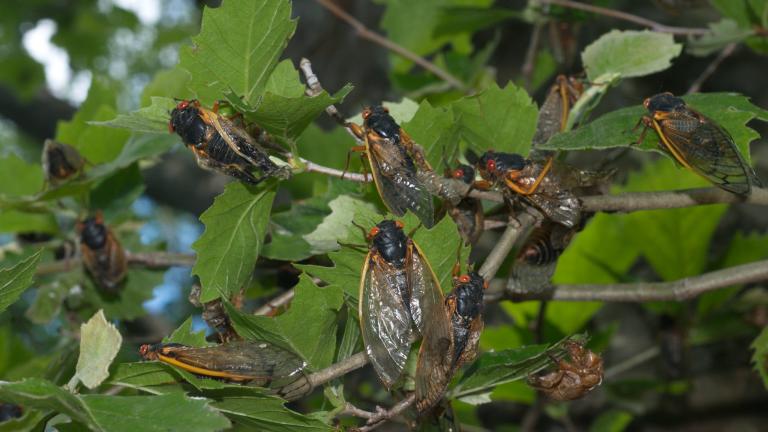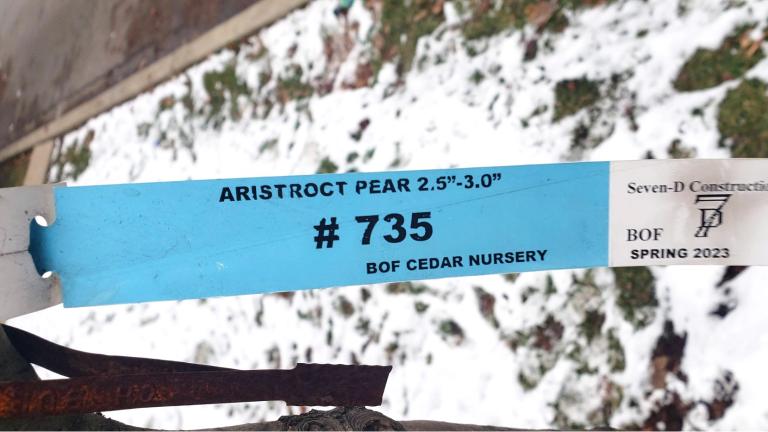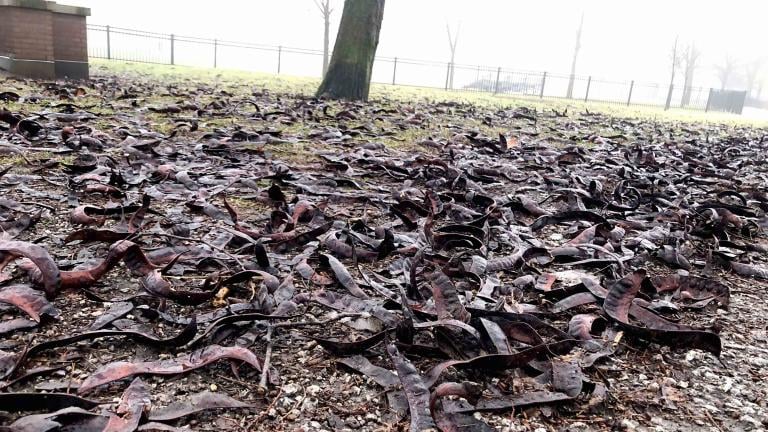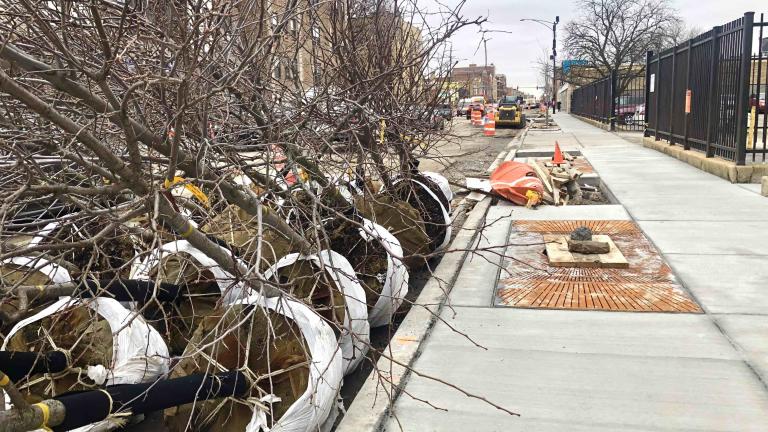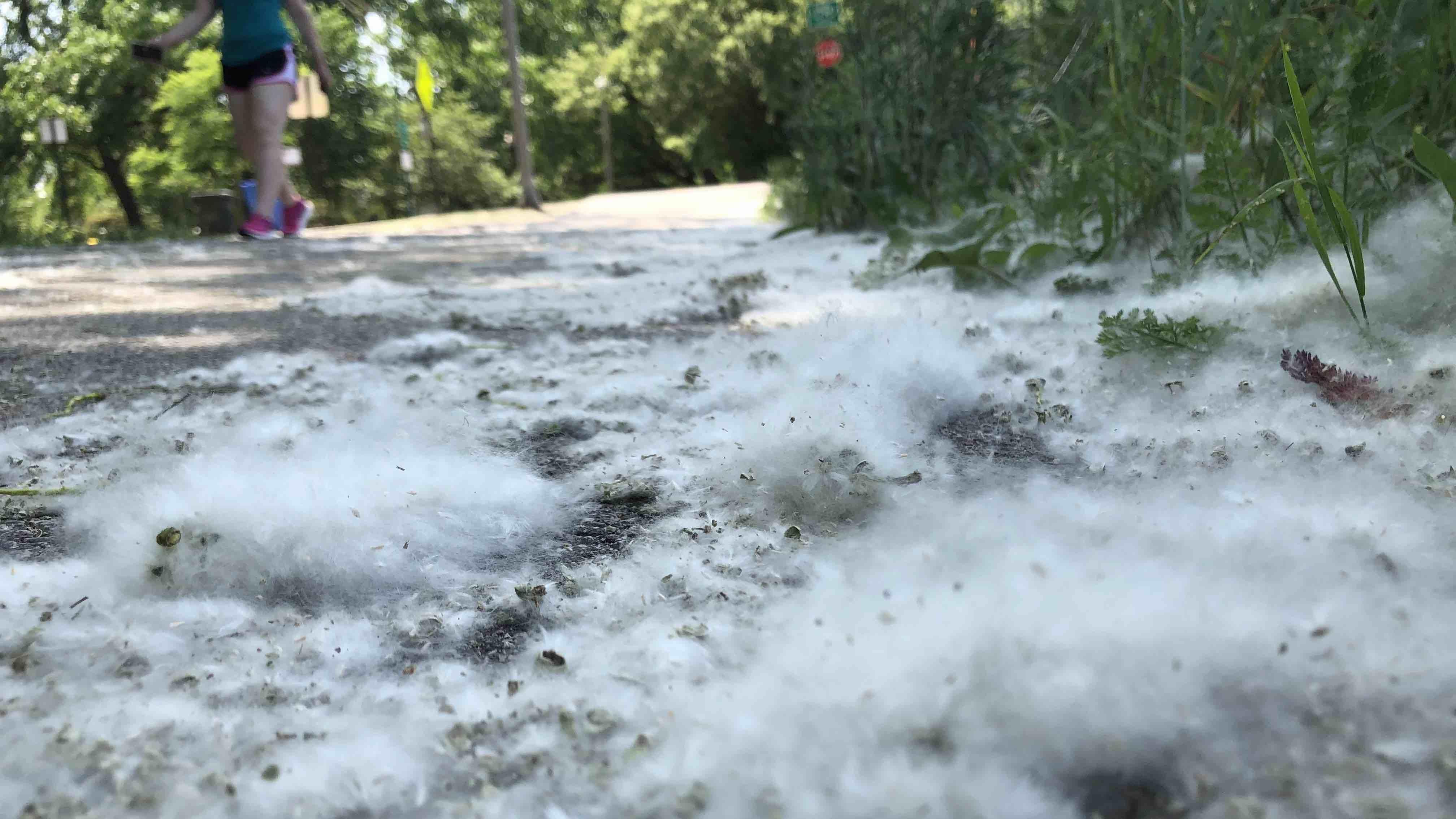 Cottonwood seed is piling up in River Park along the North Branch of the Chicago River. (Patty Wetli / WTTW News)
Cottonwood seed is piling up in River Park along the North Branch of the Chicago River. (Patty Wetli / WTTW News)
Just when we thought it was safe to put away our snow shovels, parts of Chicago are being inundated with white stuff.
It’s piling up along curbs and the edges of sidewalks, coating plants like spiderwebs and sticking to the skin.
Yep, it’s the annual appearance of cottonwood fluff, and if you were thinking this year’s showering seems excessive, you’re right. It is.
What we’re witnessing is a phenomenon known as mast seeding, said Jalene LaMontagne, a research biologist and professor at DePaul University, who studies these events.
Mast seeding is a highly variable and synchronous release of an inordinate amount of seed, she said.
Cottonwoods, sycamores, maples, conifers and oaks all do it. And while it’s not unusual, it also doesn’t occur every year.
What this means is that every so often — maybe every three years, maybe every six or seven — a species of tree will “do this big bang of reproduction,” LaMontagne said.
It’s usually regional, but in 2019 there was a huge mast event across most of eastern North America, she said.
For an eastern cottonwood (Populus deltoides) — specifically female eastern cottonwood, which are the “cotton” carriers — that can translate to as many as 48 million seeds per tree.
“When people are like, ‘Holy cow!’ that’s a mast event,” she said.
It happens when there’s a weather cue in the environment, specifically hot and dry conditions at the moment when a tree’s buds are differentiating between becoming leaves or seeds.
Masting doesn’t mean the trees are under stress and freaking out that they need to reproduce before they die, LaMontagne said.
“It’s a normal thing,” she said, pointing out that trees live for “decades and decades and decades” through all sorts of weather cycles. What studies are showing, in fact, is that extreme heat results in the opposite of masting — trees will completely shut down their reproduction, said LaMontagne.
Video: Explosion of cottonwood seed, as seen along the Chicago River. (Patty Wetli / WTTW News)
There are a couple of explanations for why masting occurs. One is that for wind-pollinated trees like cottonwoods, the explosion of seeds increases the likelihood of reproducing.
Another theory is that trees use the variable nature of masting to outfox their predators.
Think of this way, LaMontagne said: If there’s a certain bird or insect that feeds on a tree’s seeds, the population of that bird or insect can only grow as large as the tree’s output will support. So the tree typically keeps it seed production low, to similarly limit the number of predators. Then ... boom ... a mast event with so much seed that predators can’t begin to eat it all. Loads more seed than normal survives to potentially become a new tree.
Because of the amount of energy trees expend during a mast event, the events rarely if ever occur in back-to-back years, which keeps predator populations from exploiting the largesse from one year to the next, said LaMontagne, who’s delved into decades of data on the phenomenon.
OK, so where are all the baby cottonwoods?
Of a tree’s tens of millions of seeds, consider how many, particularly in the city, fall on concrete or asphalt. “Those don’t have a chance,” said LaMontagne. Neither do the ones that end up in the water. Plenty that fall on friendly soil will get eaten by ducks. And of the seeds that germinate and begin to sprout, well “now you become a seedling with delicious leaves” for something to eat, she said.
“There are so many things that can interfere,” said LaMontagne.
Consider, then, each of those seeds akin to a person buying a mega-millions lottery ticket. The odds of winning are astronomical. But someone does eventually win. Same for the cottonwood.
“You just need to have one seed make it to a tree,” LaMontagne said.
Contact Patty Wetli: @pattywetli | (773) 509-5623 | [email protected]


